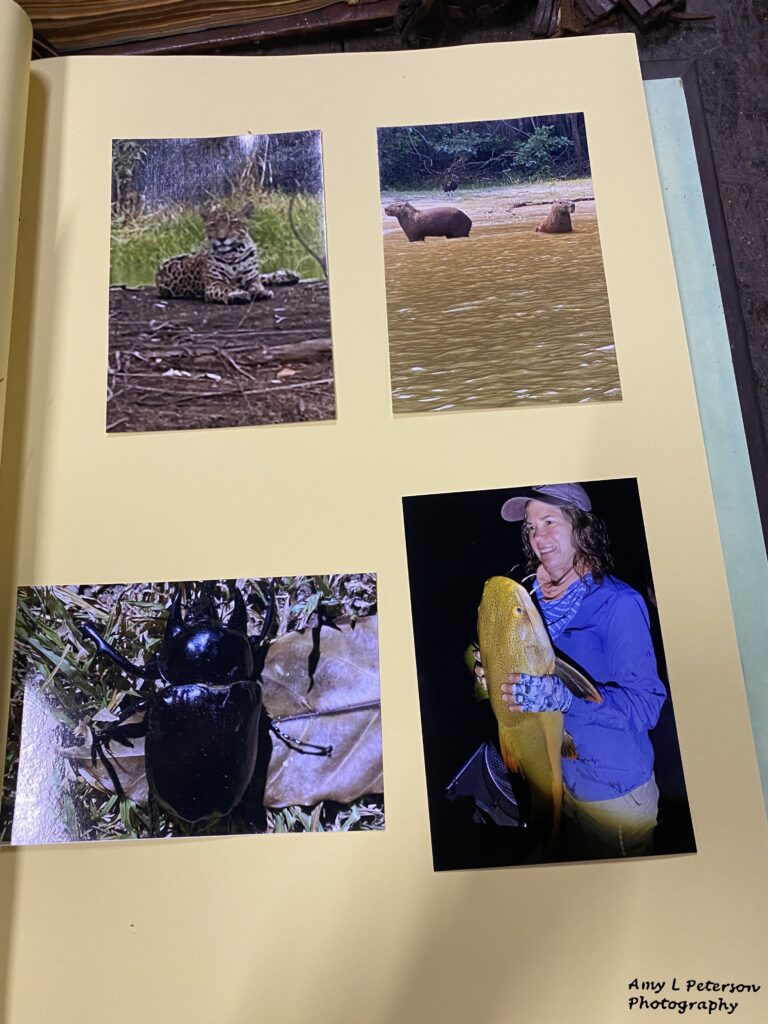Thursday, September 1, 2022. It was our last full day in the jungle and my last chance to catch a vampire fish. I awoke with vampire fish on my brain–thinking about where we would fish for vampires, what I should use to try to catch a vampire, what my chances were of catching a vampire…. But as I ambled into the shower I came face-to-face with a frog and forgot about vampires for a moment. The frog was cute, had sticky suction cups on its feet, and was perfectly willing to let me run video about taking a shower with a frog in the jungle.
I’m pretty sure this is a boy tree frog, because it stuck around to watch me shower, dry off and get dressed.
After my shower, I said good-bye to the frog, wished it well and walked the grounds. I saw nothing new to photograph, ate a big breakfast and jumped into the boat, obsessed with vampire fish.

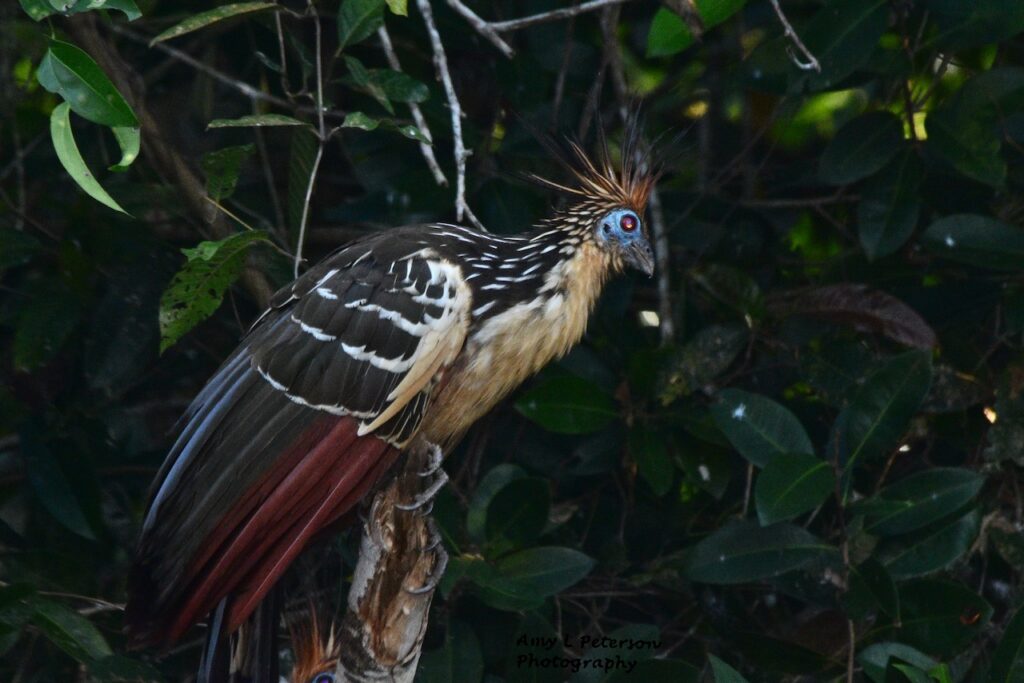
I first photographed a hoatzin on Day 1. See that posting to learn more about why it’s called a stink bird.
At our first stop I saw this bird. I had photographed a hoatzin before, but this photo was different than the other one, perhaps better, perhaps showing something a previous photo did not show. And that’s why photographers will shoot the same species more than once. So bless the guides willing to stop for such photos.
This bird will go down as one of my all-time favorites, in part because of its coloring, its nickname (stink bird) but also because baby hoatzins have claws on their wings that they use to climb trees. So, if they fall out of their nest before they can fly, they just climb back up the tree.
It was another blue-sky morning and temperatures had warmed up to a level similar to temps earlier in the week, meaning, by 8:00 we could dress like this. We headed to a sandbar we hadn’t fished yet, and the plan was to focus solely on getting me a vampire fish. Note the end of my rod: it has a 3-inch chunk of fish meat, which was John’s method of catching fish. He also generously gave us several of his hooks so we could try this method. I cast until piranhas reduced the first chunk of fish to nothing, got more fish chunks, and continued casting. And casting. Over and over again.
I’ll share here that I have a typical office job, working on my butt Monday through Friday. I fish most Saturdays in northern Michigan until late fall, work out a few days of week, and prepared for this trip by increasing my rowing to strengthen my back and legs, and by lifting a lot of weights, including “casting” dumbbells over and over again for up to a half hour. But even with that, nothing could prepare my wee wrists, hands and their related tendons for 8 hours of casting, not to mention using my hands, tendons, back and legs to wrestle giant fish. So by this, the last full day, I had to pop an aspirin just to cast…and cast…and cast. But I was determined.
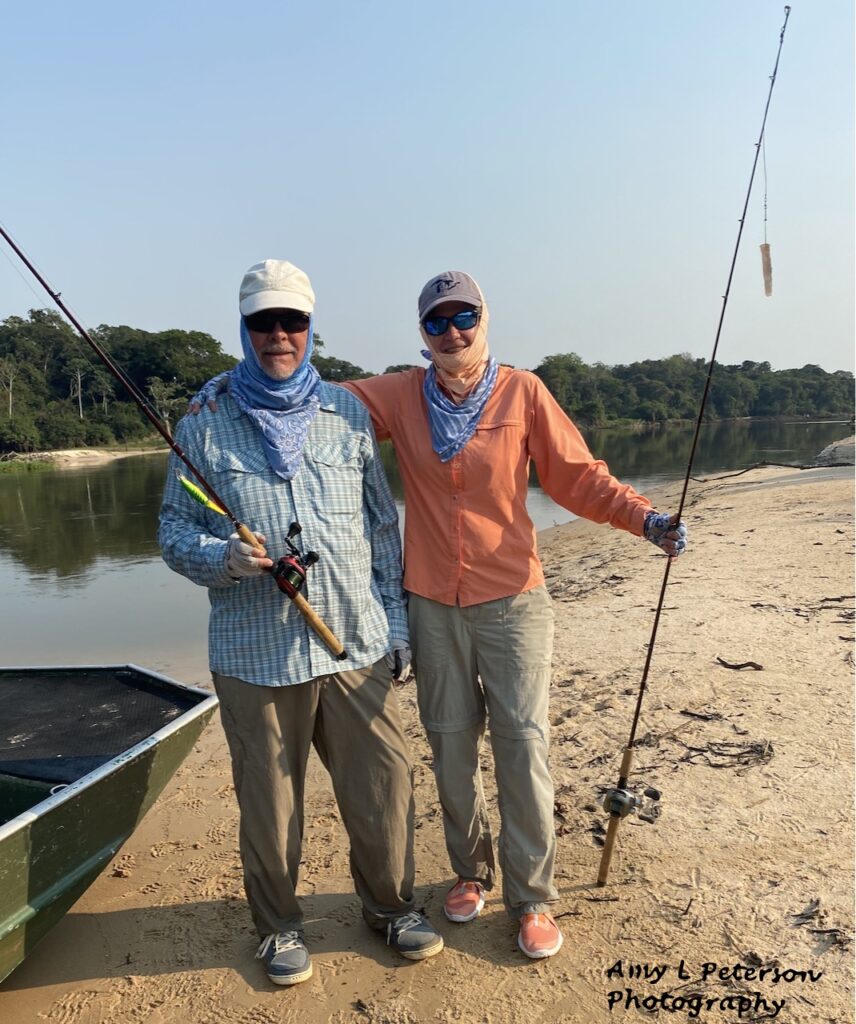
While I was flogging the water with chunks of fish, Mark was casually casting with a lure.
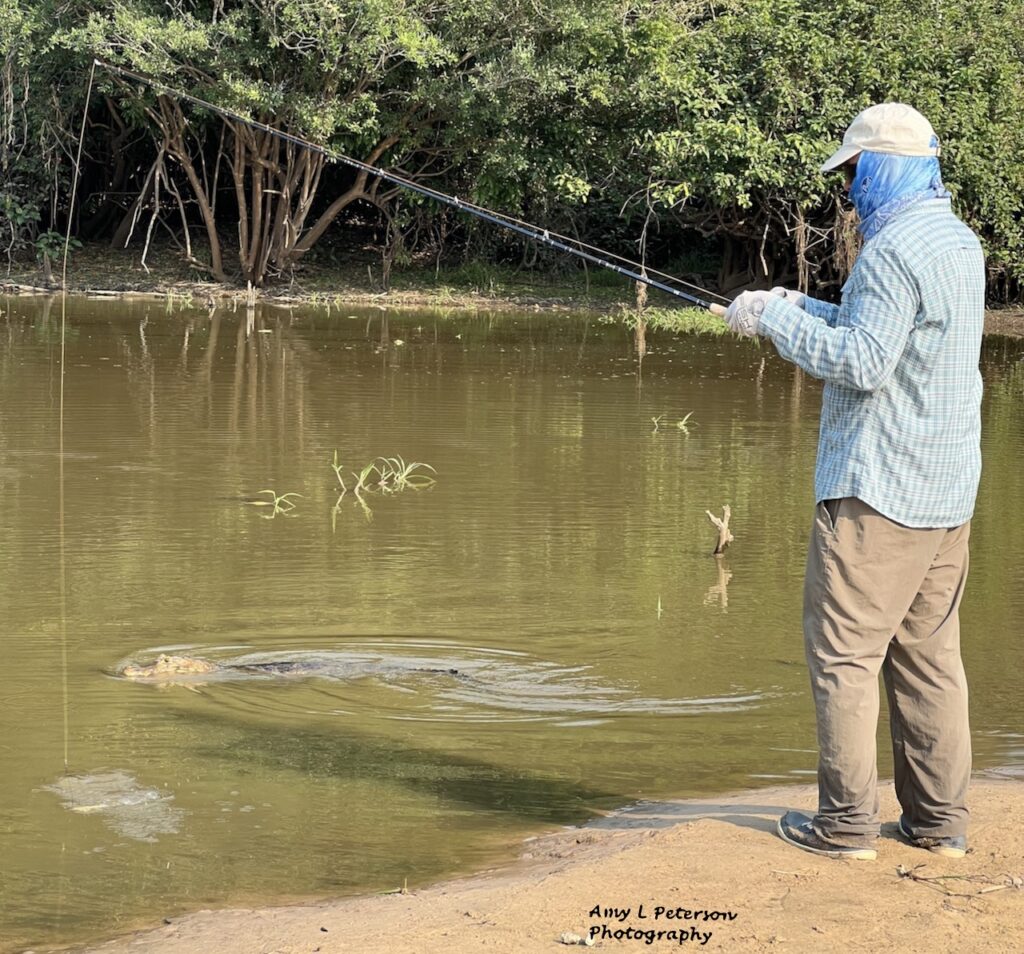
The first sand bar didn’t result in a vampire fish for me. The piranah bites, though, were amazing–in fact, so amazing, we had to fish for more wolffish for bait.
We stopped at a lagoon that the guides said held a lot of wolffish. Within seconds, Mark’s surface bait attracted a caiman. It was a small caiman, though, and I thought Mark could probably get away if he needed to.
Bismark was to Mark’s left, and as he threw a hook and line into the water by hand, a giant caiman came out from under the mat of vegetation shown in the photo, scaring away a smaller caiman. Bismark tore a branch off the deadfall to his left and threw it at the caiman. The caiman turned left quickly, went under the vegatative mat and disappeared. Yes, under the veggies. Note that we fished in the dark next to vegetative mats like that our first evening cat fishing…which meant a caiman could have been lurking underneath the whole time.
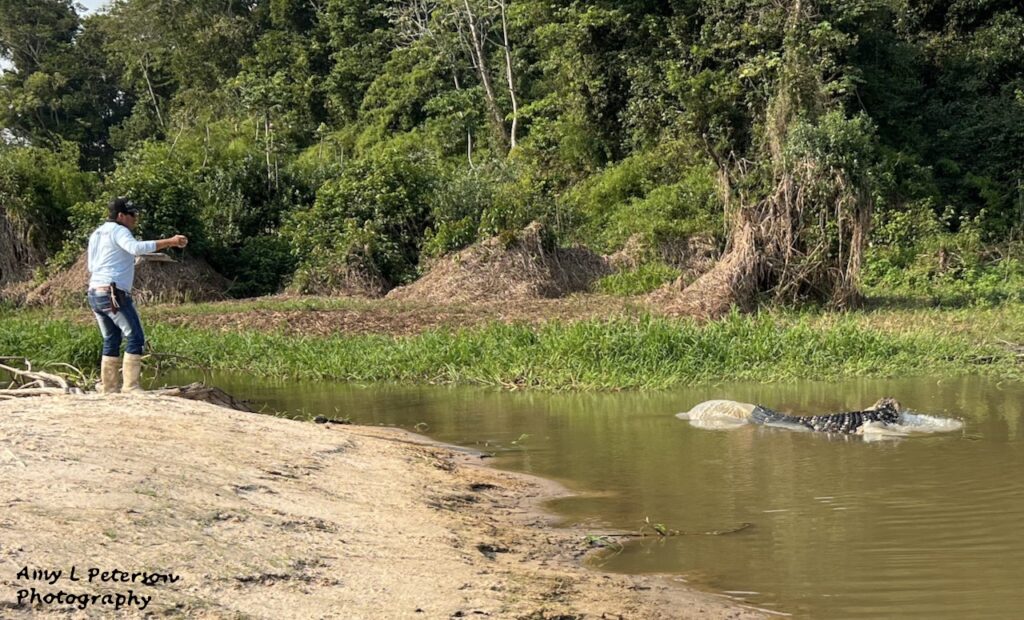

Since Mark proved he could fish with a small caiman and not get eaten, and Bismark could throw sticks at giant caiman and survive, I figured I could get a quick selfie with two little caiman in the background. I am hopeful this will be used by the Bolivian government to bring more people to Bolivia. Because what could be better than having two lil caiman pals?
It was after nine o’clock and we hadn’t caught much except another tiger shovelnose catfish. As I reached for some water, I saw Raul with a grapefruit, which he had peeled with his machete. He carved a hole in the top to remove the pith, then inserted an ice cube from the cooler. He turned the entire fruit upside down and squeezed, sucking in the freshest, chilled fruit juice anywhere.
Note here the white rubber boots Raul is wearing. When he wore the same boots on our hike through the jungle, I thought about snakes, and when we got into the leaky wooden boat, I thought how convenient they were when our wooden boat started taking on water. Our travel company–Rod and Gun–had told us that stingrays liked to hide in the sand, and that stepping on their barb could be painful, hence, another good reason to wear rubber boots. There are also electric eels in these here waters, and I bet rubber boots would help with that, too. The longer I fished in Bolivia, the more reasons I found to have rubber boots.
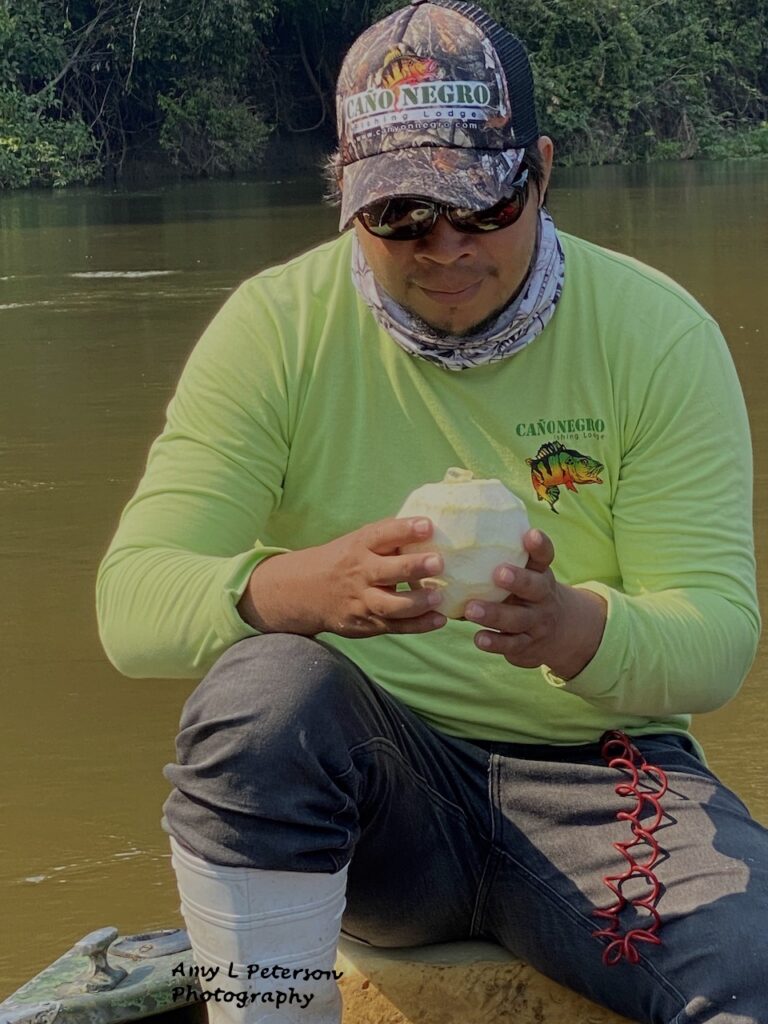

We took a break on yet another sand bar, and this one showed foot prints we hadn’t seen before. I am not a tracker of animals, but these looked very cat-like to me. The distance between prints was only about six inches, so I was guessing they were from a cat smaller than a jaguar.
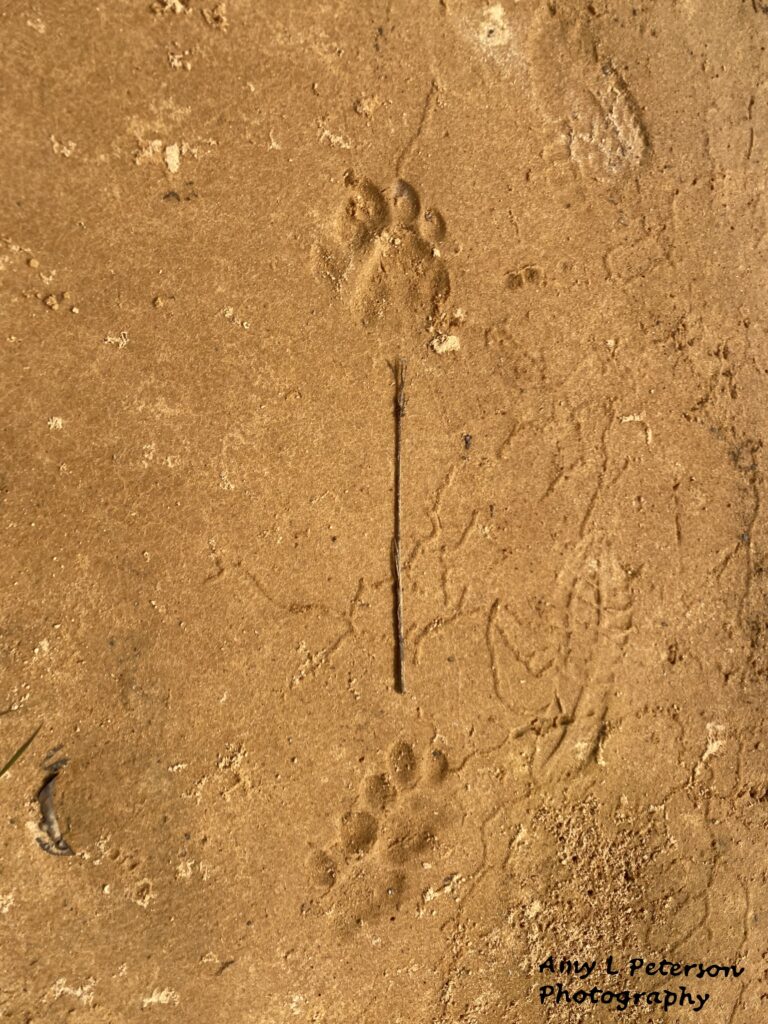
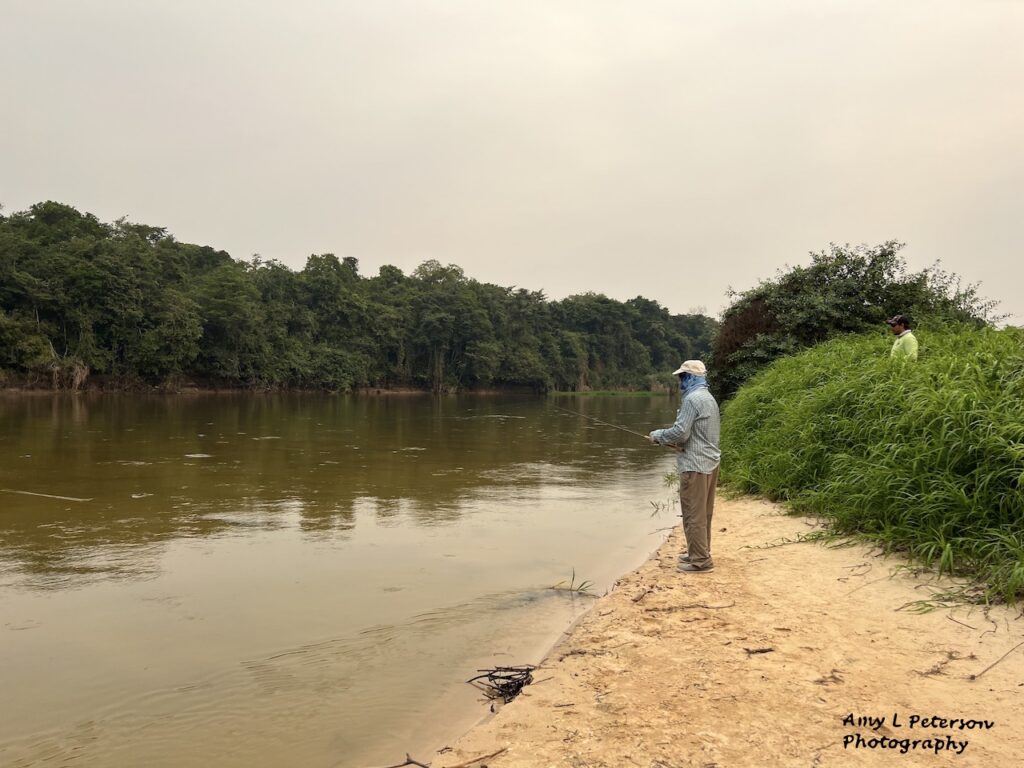
While Mark worked that area with a lure, I was just downstream on the same sandbar tossing out three-inch strips of meat. One strip after another was lost to piranhas.
Back to vampire fishing.
Fishing for vampire fish can be done from a boat, or it can be done from shore. At this location, Raul stood on a grassy rise and pointed out vampire fish that he saw in the river. The vampire fish seemed to show up suddenly from the deep water, sometimes loitering for several minutes in the shallows before they moved on. That’s Raul in the background, telling Mark where to cast his lure. We did this for most of the rest of the morning.

Finally, at 10:50 something hit my line, and before the line had run far, I set the hook with everything I had…which sent an interesting “ouch” up the enflamed tendons of my right arm. I tightened the drag on my reel and cranked, while also walking backwards up the bank and onto the grass where Raul had been standing. Meanwhile, Raul stepped into the water with the net and, after two misses, netted my first vampire fish. I couldn’t wait to hold it.

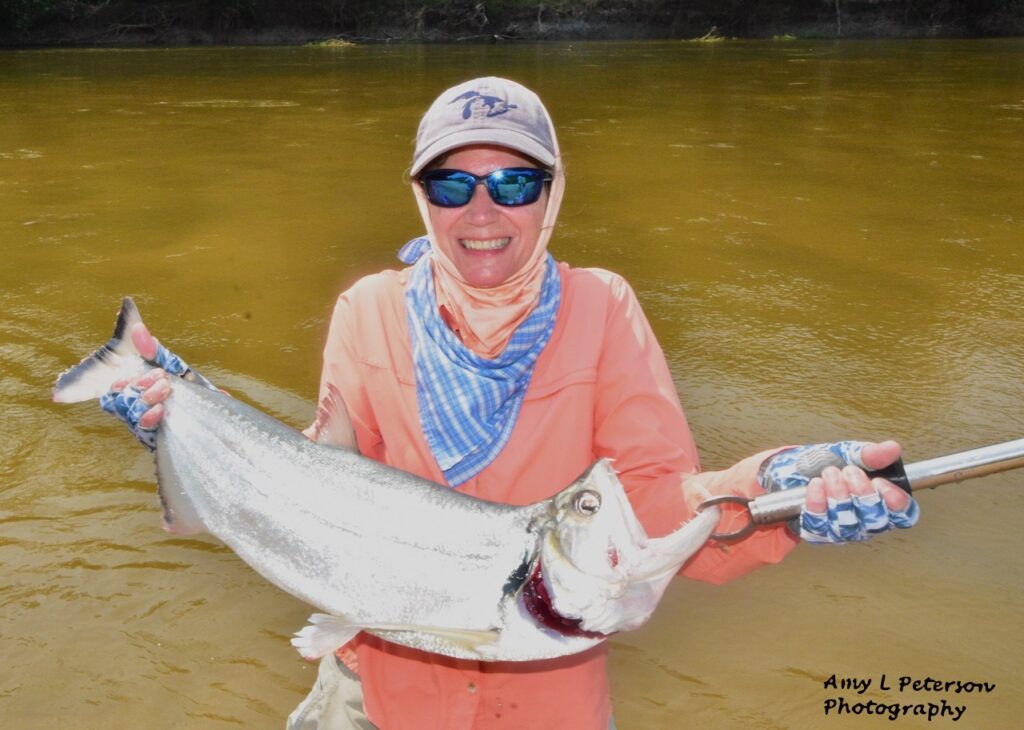
I hope you don’t mind a few photos, because I had cast probably 1,000 times for this fish and had had to wait until the morning of the last full day in Bolivia. And while we cast again and again afterwards, this would be my only vampire fish.
I thanked this toothy fish for biting my line, for the fight, and for letting me take photos of it. I let it go back into the water.
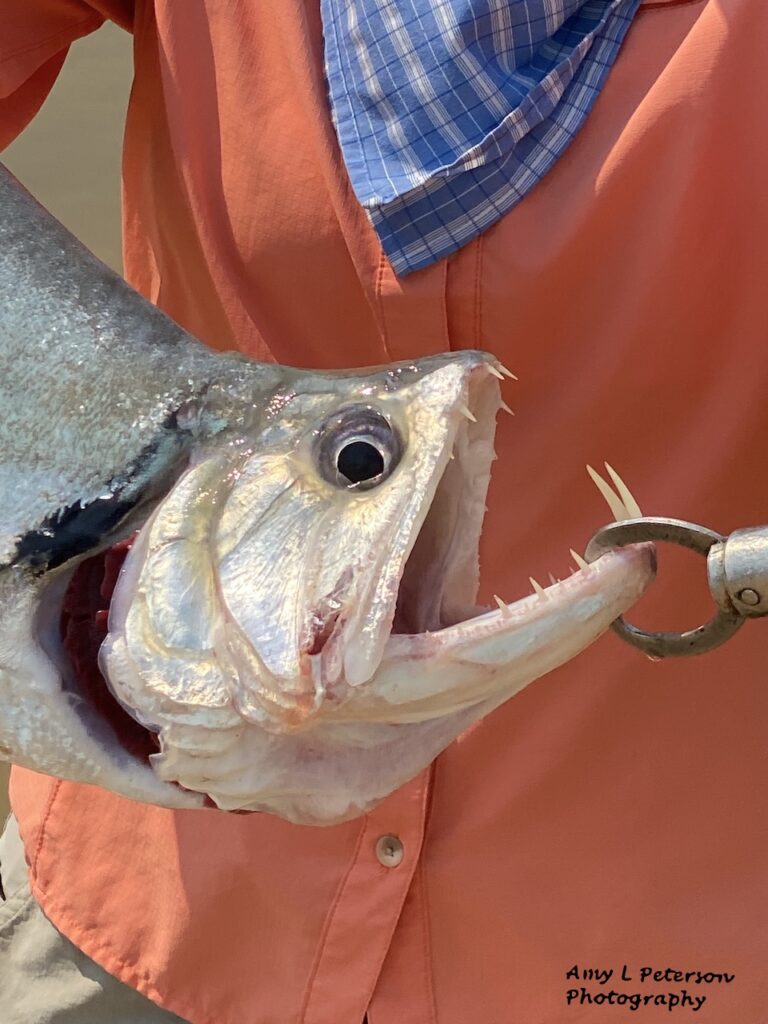
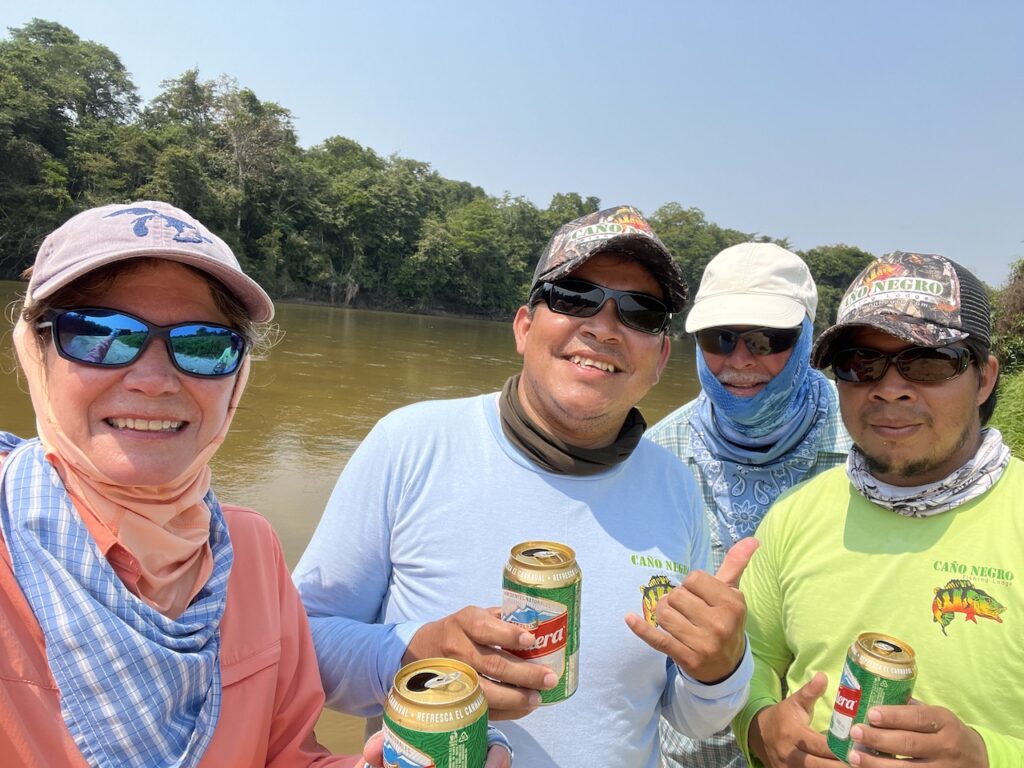
Thanks also to John for sharing his method and giving us the hooks we needed. Without that, I would have cast lures the rest of the day and likely would have gone home vampire fish-less.

Now, about the beer shown in the photo above. See, every morning, the guides filled up our cooler with bottled water, our favorite pop, an orange juice we took from breakfast, and beer. Lots of beer. Well, it wasn’t until we’d been here five days that we asked the Morrises about all the beer in the cooler and they said they had been giving beer to their guides throughout the week, pretty much whenever they wanted it. It’s not like we pay for it separately.
Mark and I had no idea the guides needed our permission to have a beer. So finally, last night, Mark and I told our guides to help themselves. They cracked one beer each when the sun went down, and an hour later, I encouraged them to take another. Today, we celebrated my fish with a beer. If I knew how to say, “Duh, sorry for not sharing beer earlier,” in Spanish I would have.

After we celebrated my vampire fish was well documented, we continued fishing. Mark decided to test his luck by walking out from shore so he could cast into the deep, faster water in the background of this photo. He got to where he is shown in the photo and had a sinking feeling. As in, he was really sinking, as into quicksand. He used his fishing rod to pry his foot out of the sucking sand and stepped back towards the shore. When I cast my eyes to the right, I saw Raul had his eyes glued on Mark. Indeed, Raul was an excellent guide.
Assured that my husband would not get swallowed up in sand, I shook my head and laughed. And I suggested he fish a little closer to shore.
As Mark walked towards me I took this photo, which is only interesting because shortly after he stepped out of the water, a small electric eel appeared and hung out in that exact spot for several seconds before it swam off. I couldn’t get my phone up fast enough to capture it.
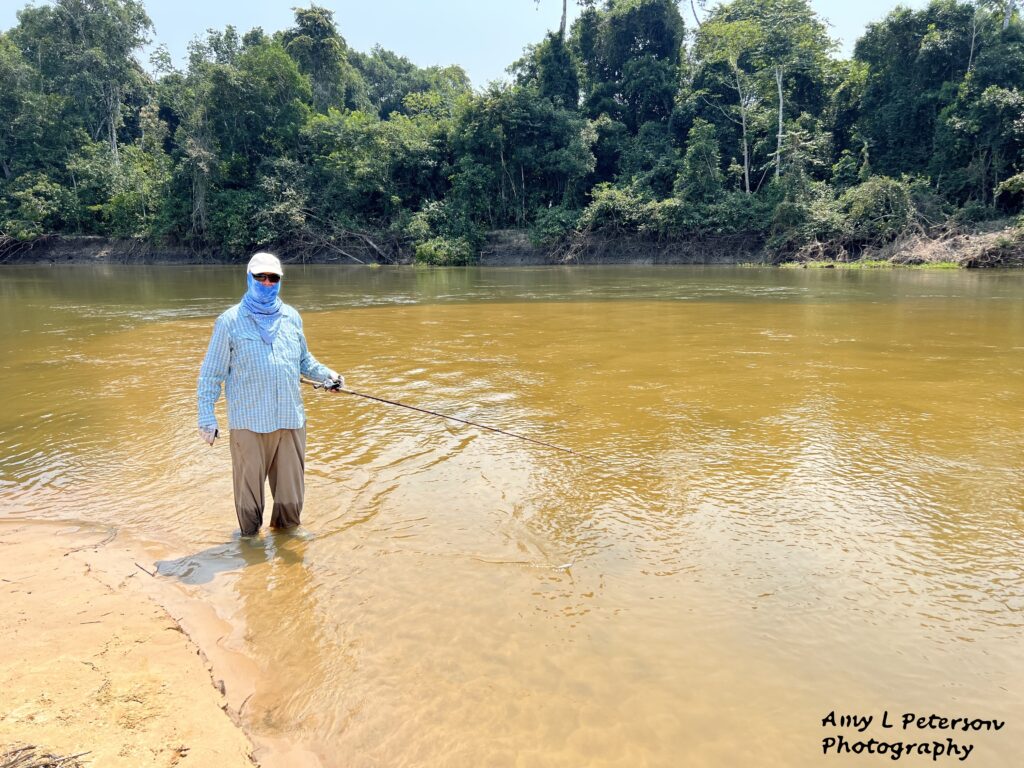
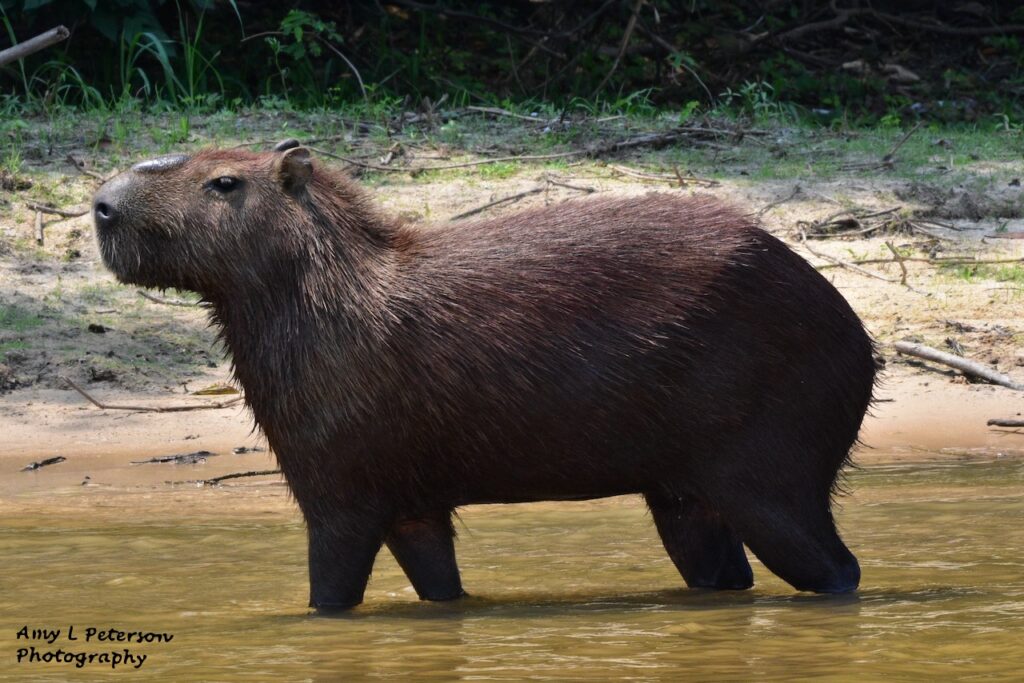
Before noon, we started heading back for lunch. As I was humming happily because I’d caught a vampire fish and that Mark hadn’t gotten munched by a caiman, swallowed up by sand, OR zapped by an electric eel, Raul suddenly cut the engine because he saw two capybaras standing in the water. The only other capybaras I had ever seen in the wild were way, way far away.
Capybaras are the world’s largest rodents and look like giant guinea pigs. They eat aquatic plants, tubers and grasses and can get up to 150 pounds.
In the first video we took, they were motionless.
I noticed this capybara had a bump on its head. I learned later that capybaras have two types of glands: one called a morrillo on their snout, and the other simply called an anal gland. (I’ll note here that the snout gland has a Spanish name but the other one does not). Anyway, apparently, both sexes have both types of glands, but males have larger morellos…and use their anal glands more frequently. Male anal glands are also lined with detachable hairs, a fact I cannot verify any more than I can verify the frequency in which they use their anal glands. I mean, who studies this kind of thing?
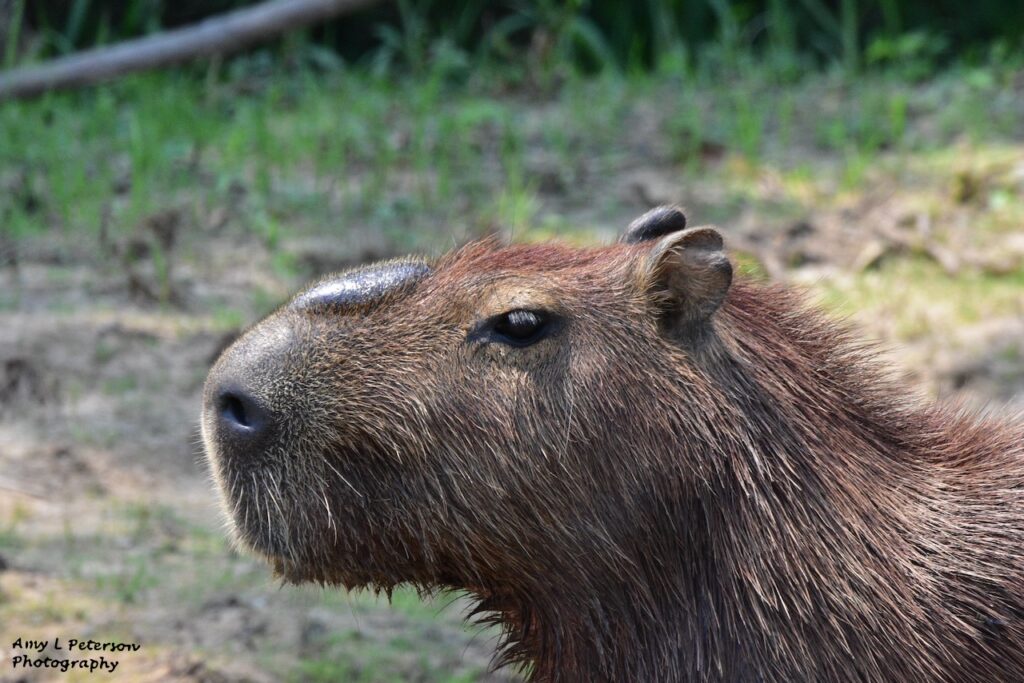
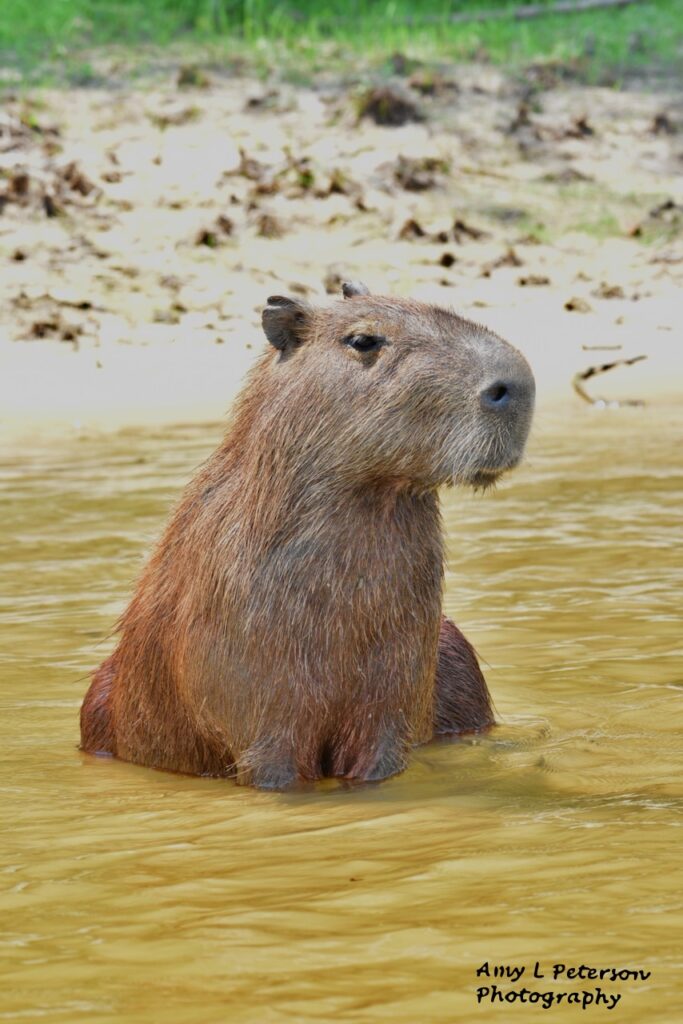
Nearby, was this capybara, which I guessed was the female, only because she didn’t have a big bump above her nose like the other one. She was hiding her anal glands, too.
This is the other video we took of the capybaras.
She sat in the water moving only her head as I photographed her and our boat drifted by. Then, she suddenly, stood up and walked casually to her male buddy.

The capybaras walked to shore, but paused as we drifted by, perhaps pondering returning to their bath.
Raul cranked up the motor and we sped back to the lodge for lunch.

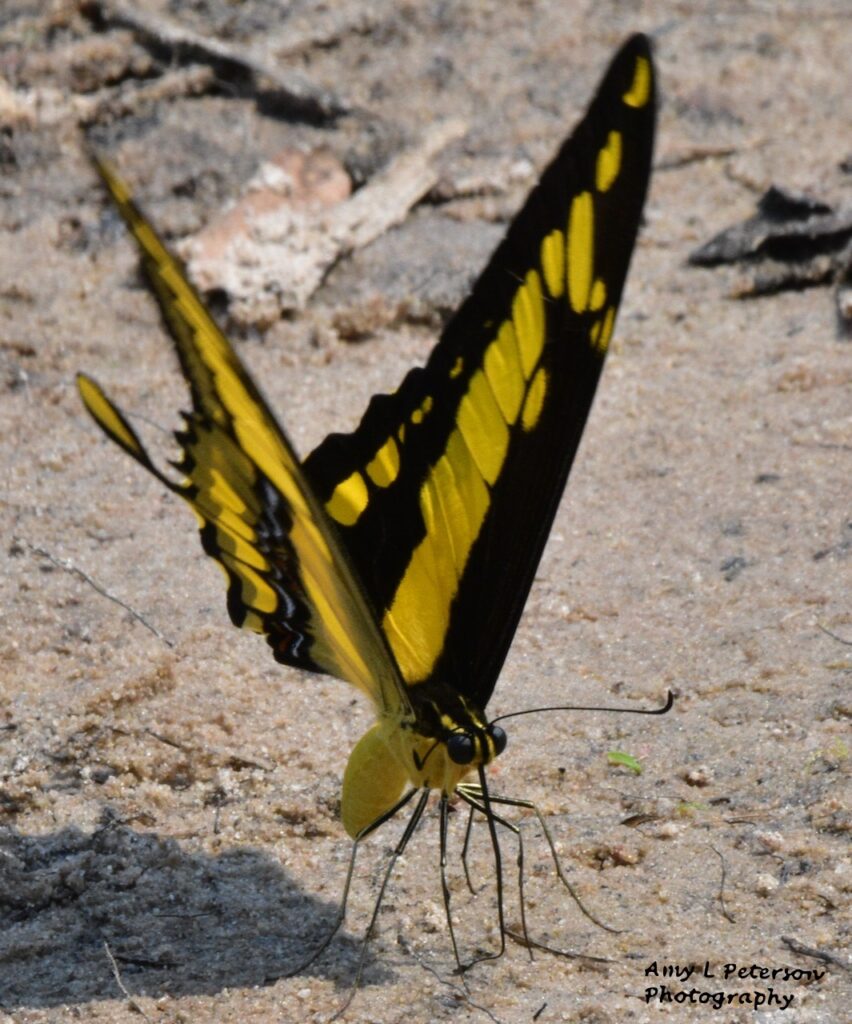
Back at shore near the lodge was this butterfly, a swallowtail.
After lunch I walked around the grounds and stumbled upon this bird, which I think is a buff-throated wood creeper. It eats ants, other insects and spiders.
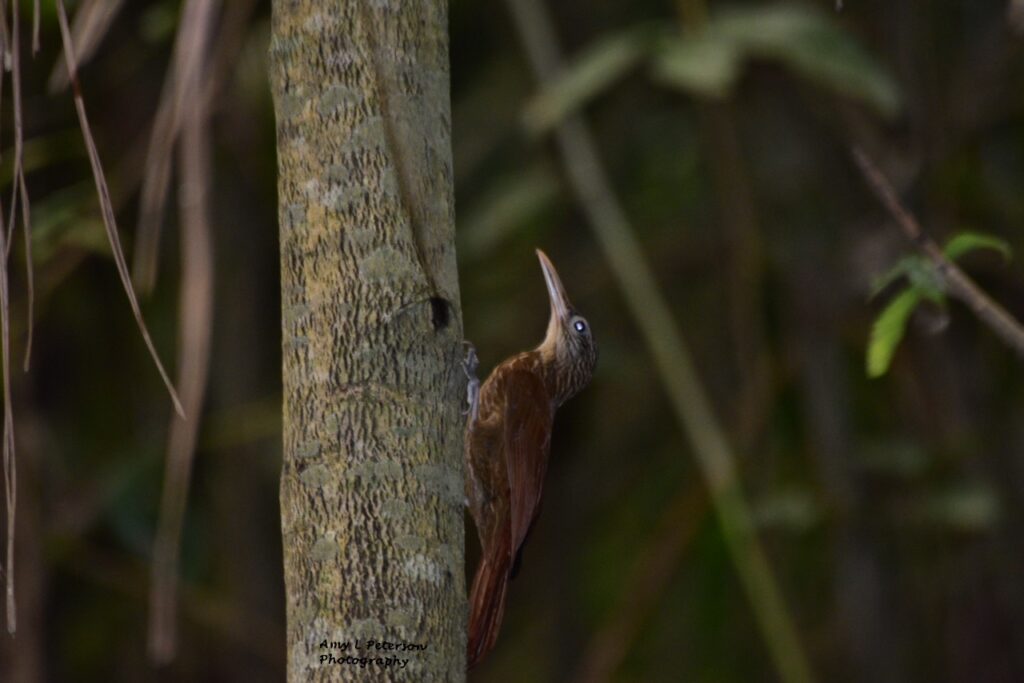
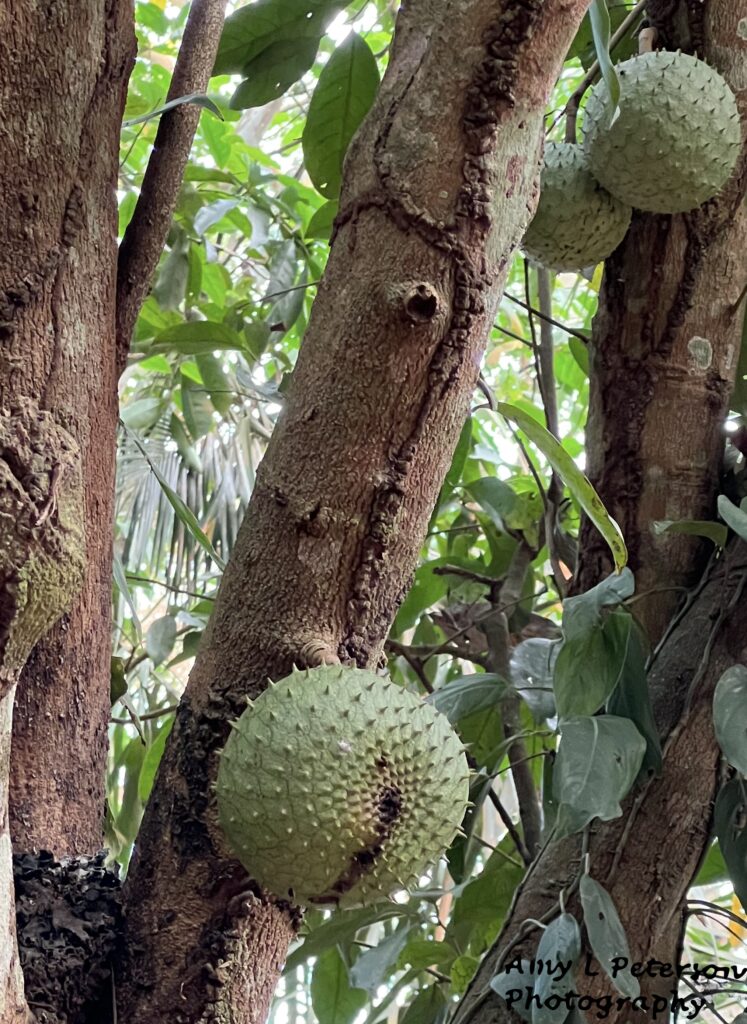
The wood creeper was creeping around this tree, which is an awesome tree if you ask me. I called it a prickly ball tree. I’m pretty sure that’s not it’s real name.
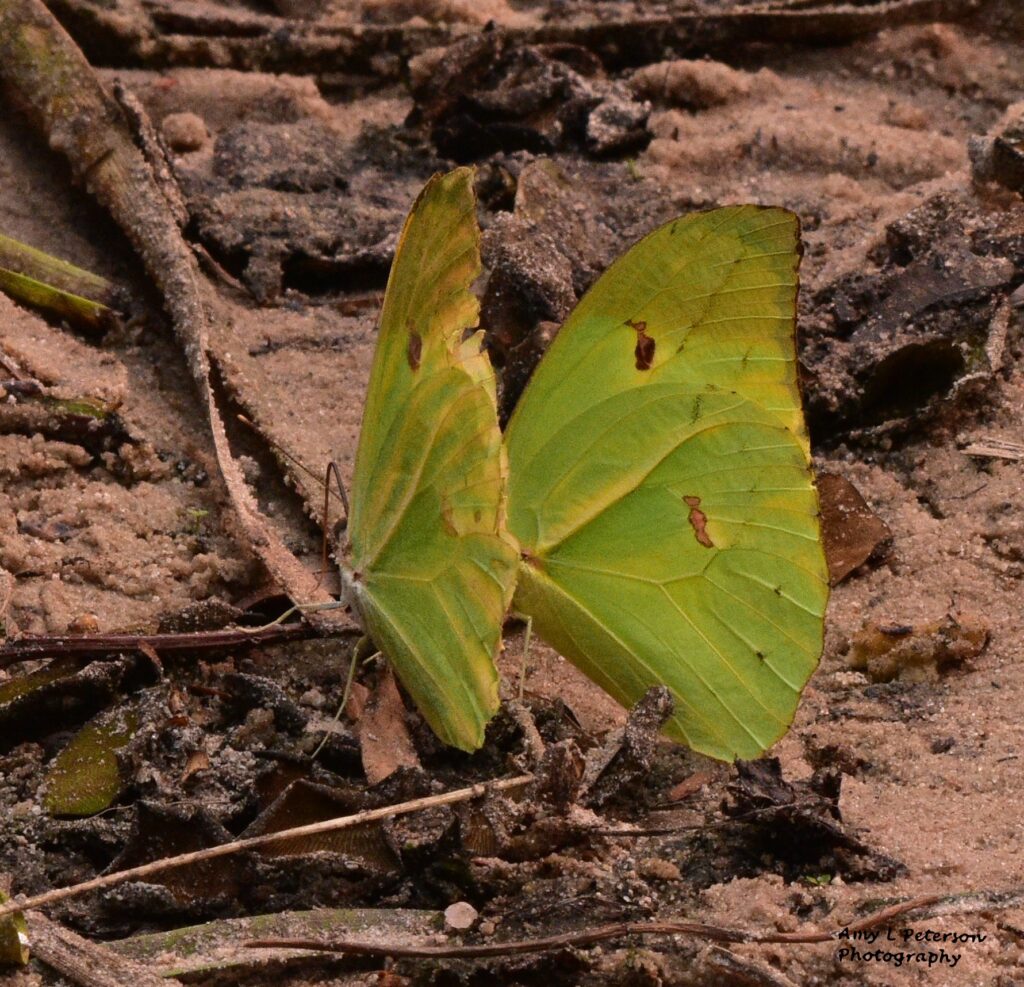
Before we went fishing for our last full afternoon in Bolivia, I went down to the water and found these butterflies in the sand. From a distance they looked liked leaves. Zoomed in closer, they still looked leaf-like.
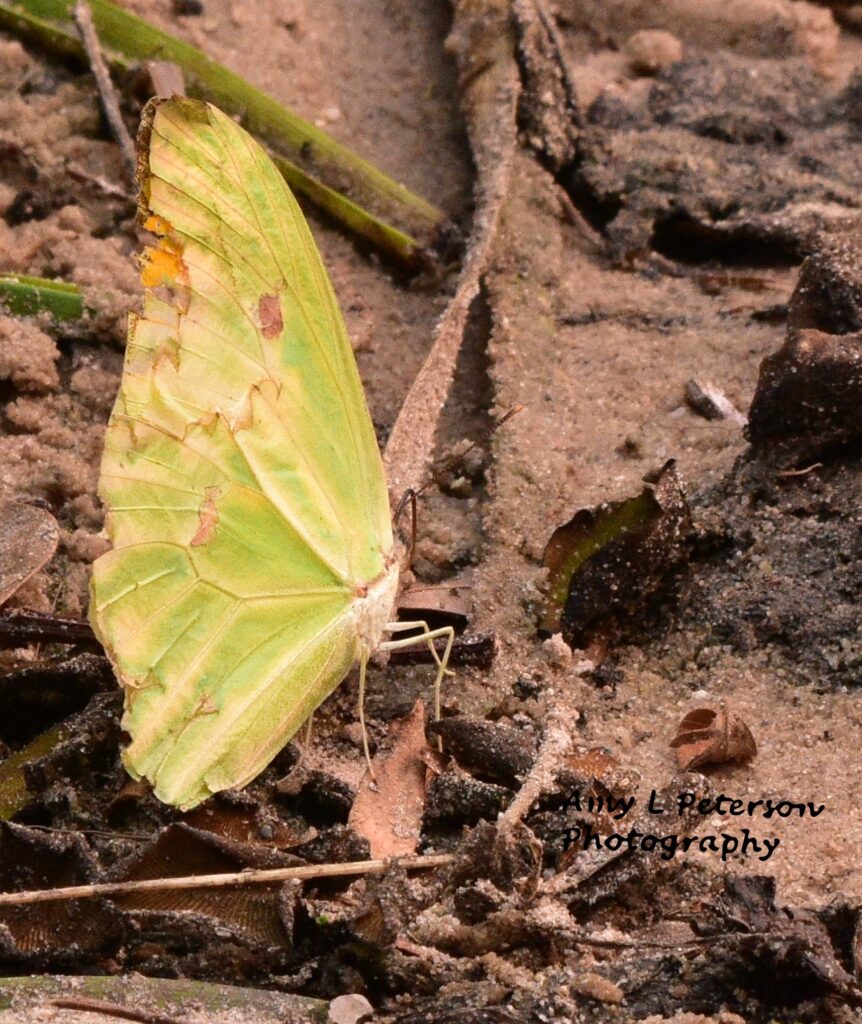


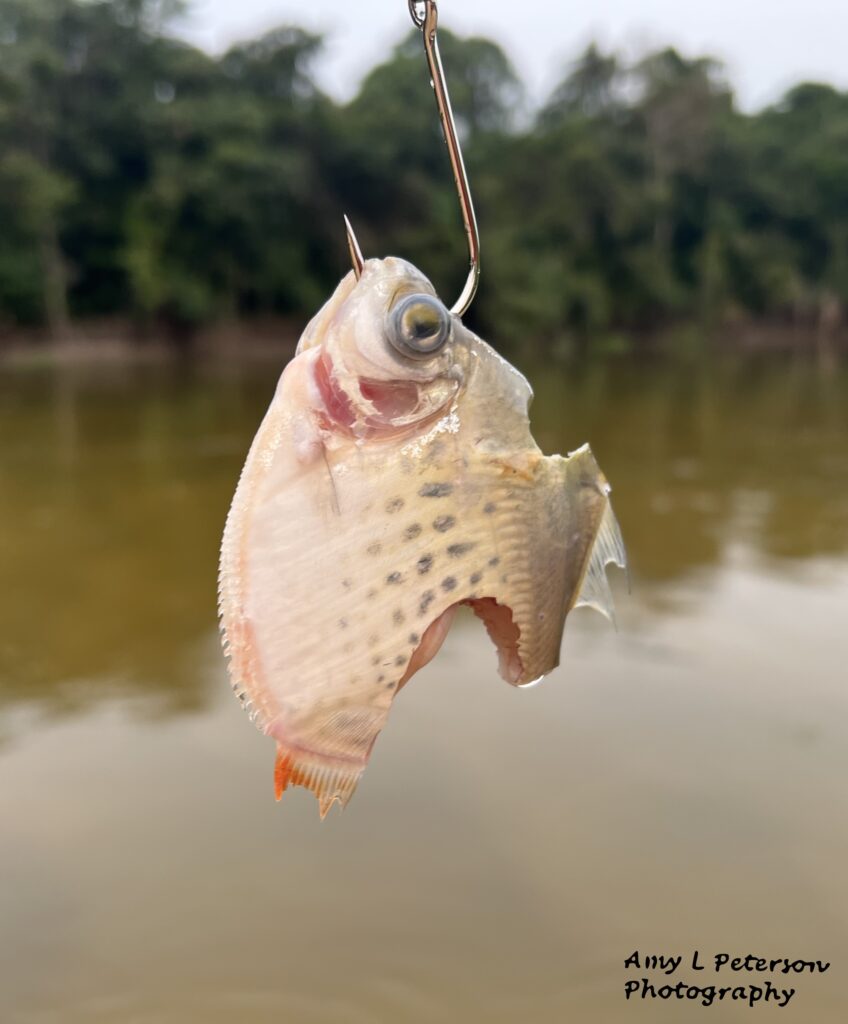
We caught a few more fish, including a few piranhas, a shovel nose catfish and this fish which we think is a Sardinita. I forgot to ask at the time because I was still laser focused on trying to get another vampire fish.

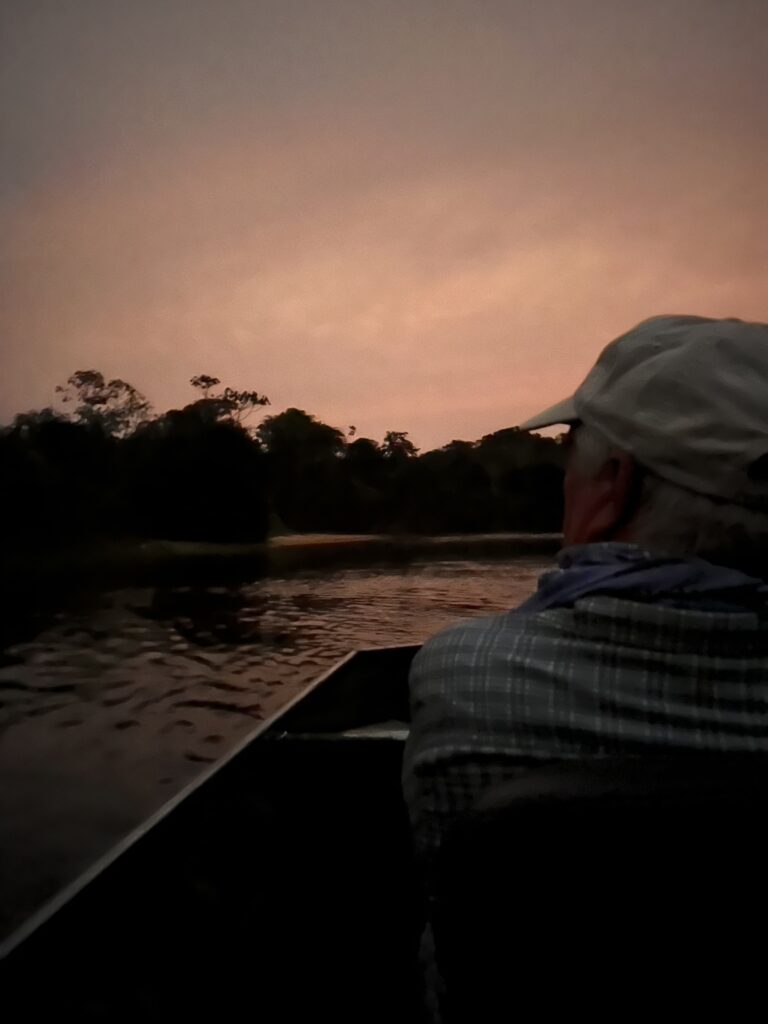
We took in the last sunset and settled in for our last evening fishing for catfish. I reflected on our nights fishing in the jungle–how scary it was at first and how I got used to, and appreciated, every bit of it: the absolute darkness on starless nights, the sound of “work, work, work” when the frogs called from the shoreline, strange calls from birds, blinking white lights of fireflies, large splashes as caiman went after prey, and, when the flashlights were turned on, large, fish-eating bats fluttering across the water trying to nab fish without getting eaten by caiman, and smaller bats eating tons of bugs, none of which wanted to bite us.
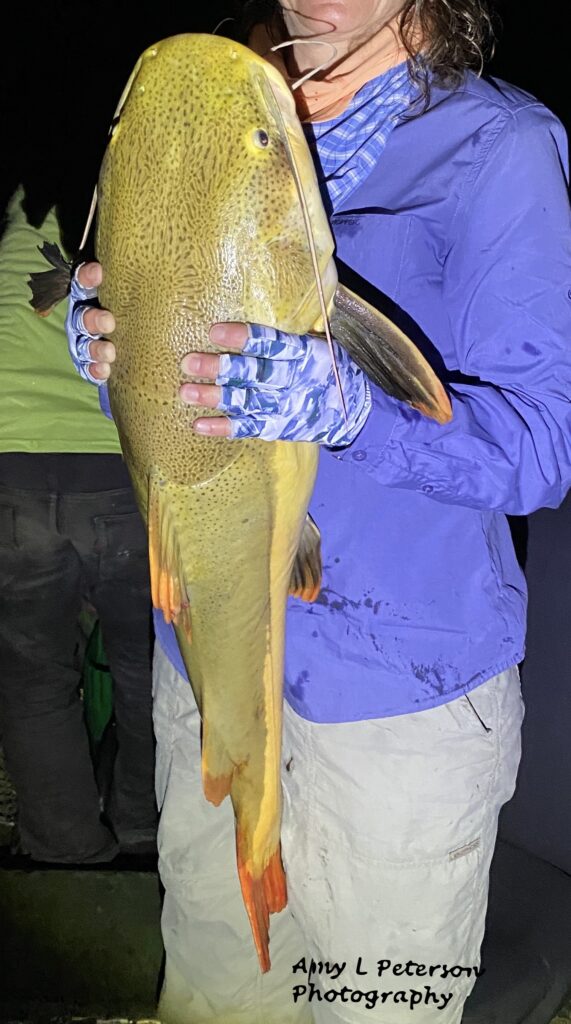
We also reflected on the fish we had caught–the variety, the colors and patterns, the fierceness each one possesses to survive in this place.
And we also enjoyed the guides, because every evening when the sun set, while most of the time we heard nothing but the natural sounds around us, some times, we heard quiet whispers in Spanish and a little bit of giggling from two guys who clearly loved their jobs.
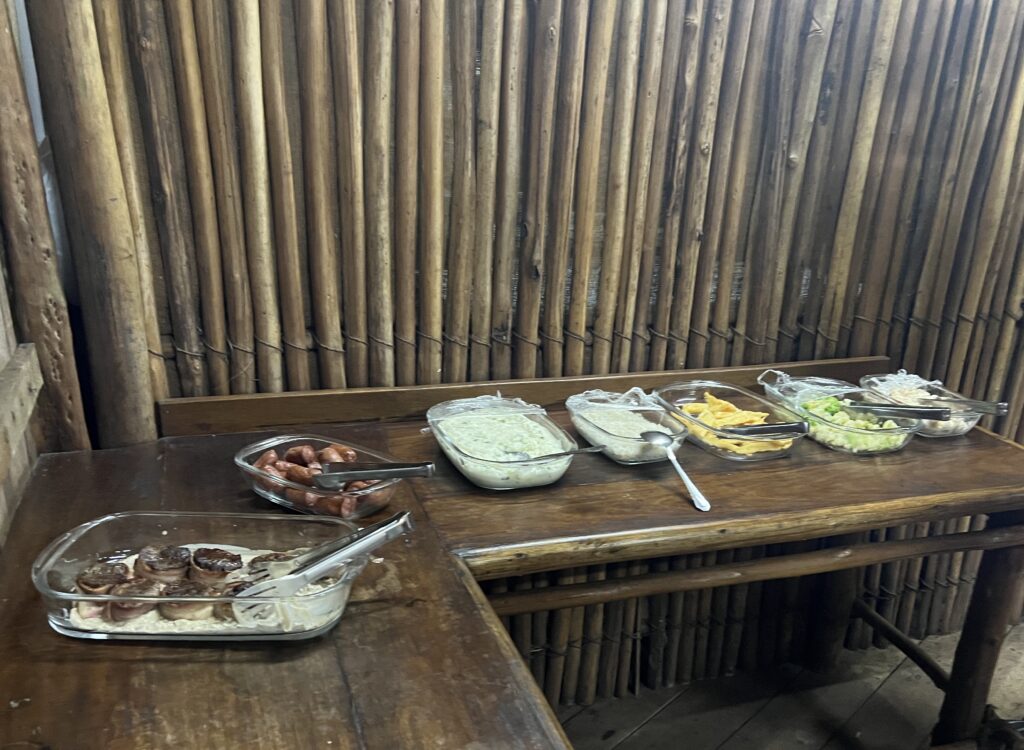
As with every other night, dinner was cafe-style. I passed on the meat and got my very own veggie patty. The lodge was great accommodating my desire to choose vegetarian when such is an option.
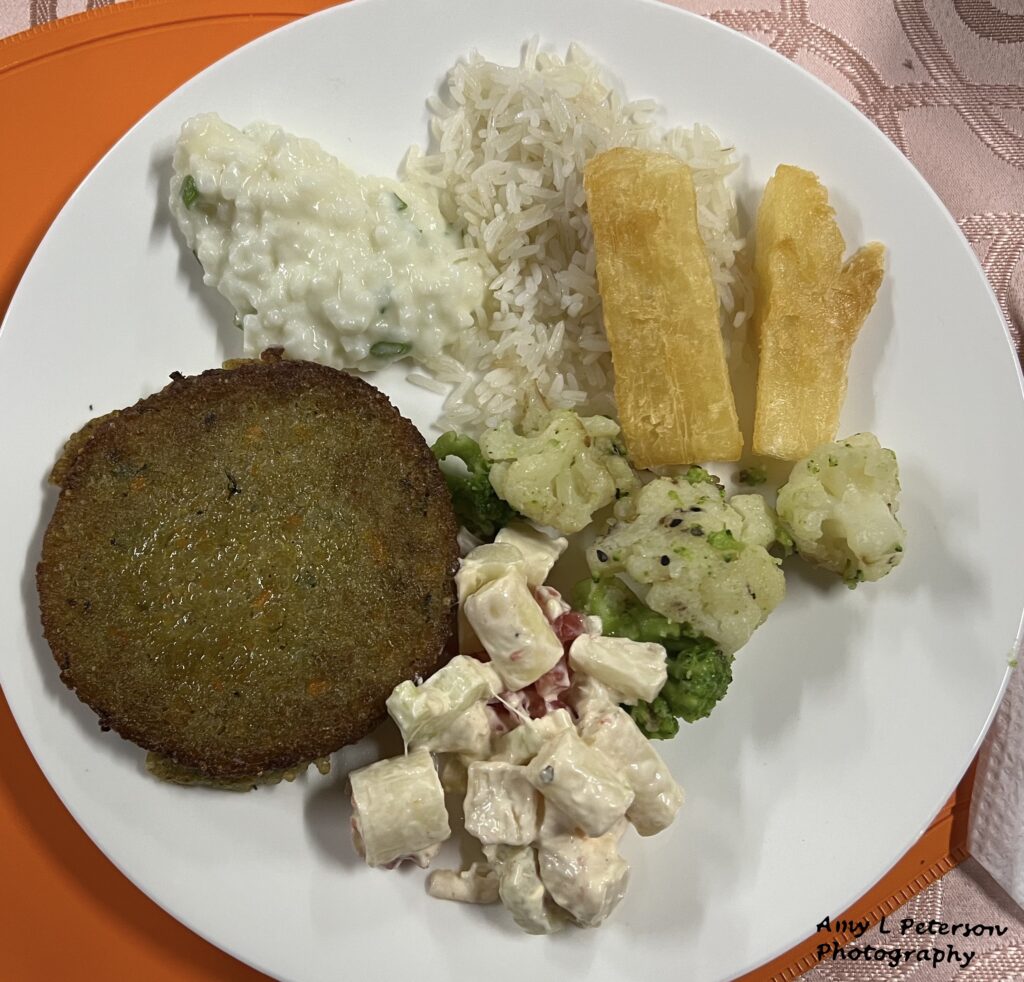
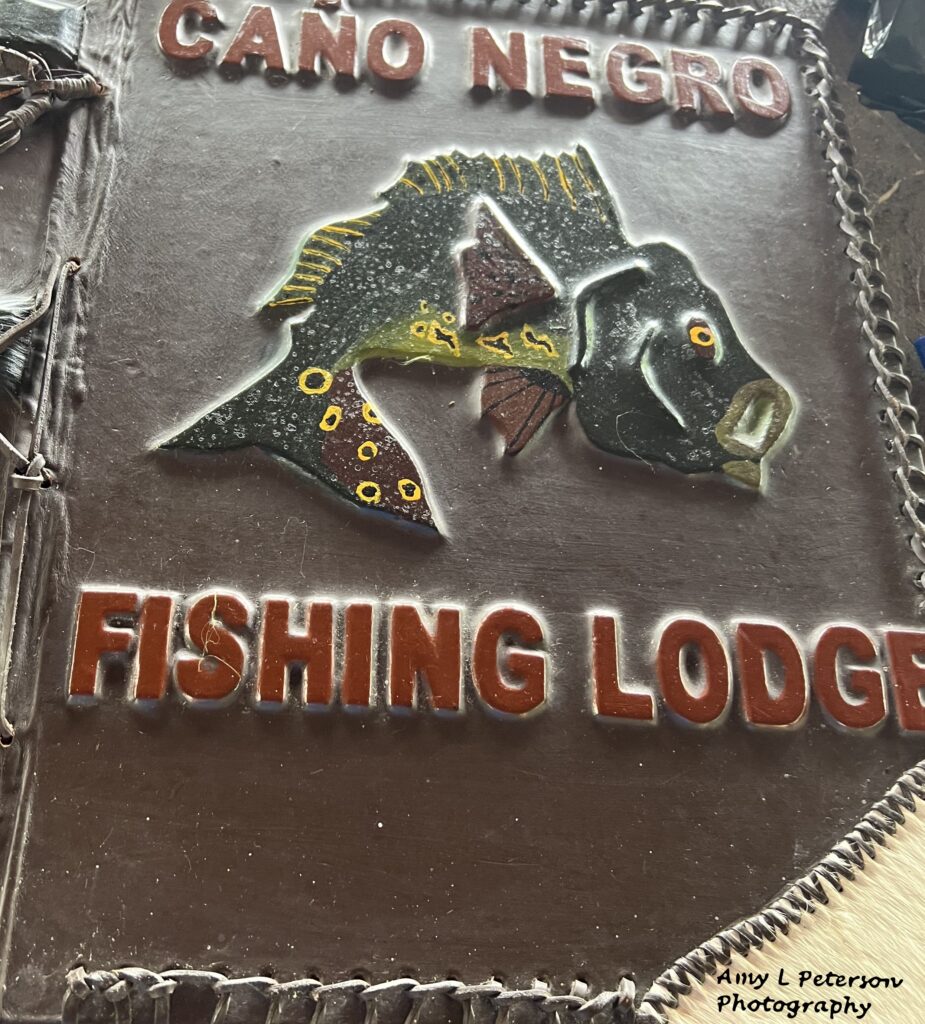
Memo asked us to pick some photos to add to his guest book, which is a huge leather-bound book containing 3-4 photos from each of the guests. Mark chose four photos. And with that, we ambled off to bed.
Oh, in case you were wondering: my morning froggie friend was not waiting for me in the bathroom. He apparently had moved on to hang out in someone else’s shower.
